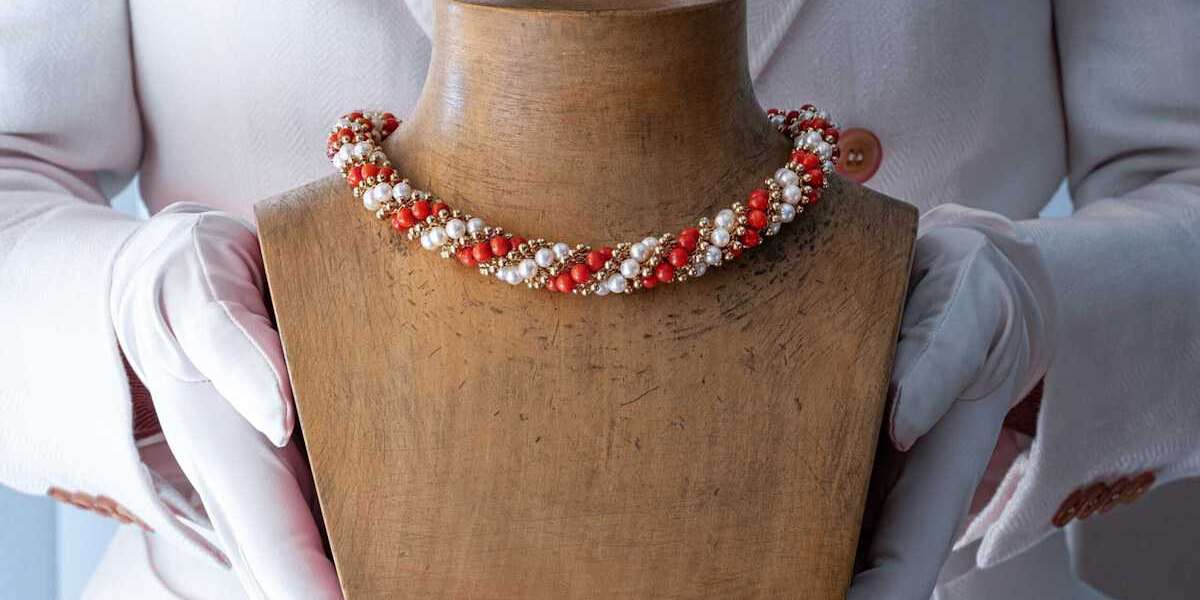Studio Jewelers vs Manufacturing Houses: Understanding the Difference
The jewelry industry operates through two fundamentally different production models that significantly impact both the creation process and final value of pieces. Studio jewelers work as independent artisans or small workshops, typically producing limited quantities with emphasis on individual craftsmanship and artistic expression. Manufacturing houses, conversely, operate as established brands with structured production lines designed to create jewelry at commercial scale while maintaining consistent quality standards.
Understanding this distinction proves essential for collectors, investors, and enthusiasts when evaluating authenticity, craftsmanship quality, and long-term value potential. Each production model carries distinct characteristics in design approach, manufacturing techniques, and market positioning that directly influence pricing, rarity, and collectibility factors.
The Philosophy of Creation: Artisan Vision vs Commercial Scale
Studio jewelers operate with complete creative autonomy, allowing for experimental techniques and unique design interpretations. Each piece reflects the maker's personal aesthetic vision and technical expertise, resulting in distinctive characteristics that serve as the artisan's signature. Production remains intentionally limited, often ranging from one-of-a-kind pieces to small series of 10-50 items.
Manufacturing houses prioritize brand consistency and market appeal through:
- Standardized design processes involving multiple specialists
- Market research-driven product development
- Scalable production methods for broader distribution
- Quality consistency across entire product lines
The creative process differs fundamentally between these models. Studio jewelers typically control every aspect from initial concept to final polish, while manufacturing houses employ specialized teams where designers, gemologists, and craftsmen each contribute specific expertise. This collaborative approach enables complex projects but may limit individual artistic expression.
Design innovation manifests differently in each setting. Studios often pioneer experimental techniques and unconventional material combinations, while manufacturing houses focus on refining established methods and adapting trends for commercial viability.
Craftsmanship and Production Methods
Studio jewelers predominantly employ traditional hand-forging techniques, including manual stone setting, hand-engraving, and artisanal finishing methods. Each piece receives individual attention throughout the creation process, allowing for real-time adjustments and personalized details. Manufacturing houses utilize precision machinery, computer-aided design, and standardized procedures to ensure consistent results across multiple pieces.
Professional insight: Hand-finished pieces typically require 40-60 hours of work per carat for complex settings, compared to 8-12 hours for machine-assisted production.
Quality control protocols vary significantly between production models. Studio jewelers inspect and adjust each piece personally, often making modifications during creation. Manufacturing houses implement systematic quality checkpoints with documented standards, ensuring every piece meets predetermined specifications before release.
Materials sourcing reflects each model's operational scale and philosophy. Studio jewelers often select stones and metals individually, sometimes traveling to mines or cutting houses for specific pieces. Manufacturing houses establish relationships with major suppliers, purchasing materials in bulk to maintain consistent inventory and competitive pricing while meeting production schedules.
Market Value and Collectibility Factors
Rarity significantly influences valuation patterns between studio and manufacturing house pieces. Studio jewelry typically commands premium prices due to limited production runs and unique characteristics, with values often appreciating based on the artisan's reputation and technical innovation. Manufacturing house pieces derive value from brand recognition, historical significance, and documented provenance, particularly for discontinued models or special editions.
Provenance documentation plays crucial roles in authentication and valuation for both categories. Studio pieces require detailed maker attribution, creation dates, and exhibition history when available. Manufacturing house jewelry benefits from original sales receipts, service records, and catalog documentation that verify authenticity and production periods.
Investment potential varies considerably between production models. Studio pieces by recognized artisans often demonstrate strong appreciation rates, especially when the maker gains posthumous recognition or museum representation. Established manufacturing houses offer more predictable value retention, with certain periods and designers showing consistent market demand. Market liquidity differs significantly, as manufacturing house pieces typically enjoy broader collector recognition and easier resale opportunities.
Authentication and Identification for Collectors
Studio jewelry exhibits distinctive characteristics that reflect individual maker techniques:
- Unique tool marks and finishing patterns
- Irregular proportions indicating hand fabrication
- Personal maker's marks or signatures
- Non-standardized construction methods
Manufacturing house pieces display consistent quality markers and standardized hallmarks. Documentation standards vary significantly between categories, with established houses maintaining comprehensive archives and certificates of authenticity. Studio pieces often lack formal documentation, requiring expert evaluation of construction techniques and stylistic elements.
Red flags during evaluation include inconsistent hallmarking, unusual construction methods for claimed origins, and documentation discrepancies. Professional assessment considers technical execution quality, period-appropriate materials and techniques, and comparative analysis with authenticated examples. Manufacturing house pieces require verification of hallmarks against known production periods and style consistency with documented catalog references.
Conclusion
Understanding the fundamental differences between studio jewelers and manufacturing houses enables informed collecting decisions and accurate value assessment. Each production model offers distinct advantages: studio pieces provide artistic uniqueness and potential appreciation based on maker recognition, while manufacturing house jewelry delivers brand heritage and market stability.
Knowledge of these production philosophies, craftsmanship methods, and authentication markers proves essential for building meaningful collections that align with personal preferences and investment objectives. Whether seeking artistic innovation or established luxury heritage, recognizing these distinctions ensures confident acquisition decisions.
Connecting to Grygorian Gallery Collections
The principles discussed in this analysis directly apply to evaluating signed jewelry pieces, where understanding maker attribution and production methods becomes paramount for authentication and valuation. Grygorian Gallery's curated collection exemplifies these concepts through carefully authenticated pieces from both renowned manufacturing houses and distinguished studio artisans, spanning diverse categories from necklaces and bracelets to rings and brooches. The collection showcases pieces across various materials including platinum, 18k gold variants, and sterling silver, demonstrating the quality standards and authentication expertise essential for discerning collectors.
Main Collection
Types Of Signed Jewelry
- https://grygorian.com/signed-jewelery/type-of-jewelry-necklace/
- https://grygorian.com/signed-jewelery/type-of-jewelry-bracelet/
- https://grygorian.com/signed-jewelery/type-of-jewelry-earrings/
- https://grygorian.com/signed-jewelery/type-of-jewelry-brooch/
- https://grygorian.com/signed-jewelery/type-of-jewelry-ring/
- https://grygorian.com/signed-jewelery/type-of-jewelry-cufflinks/
Signed Jewelry By Color
- https://grygorian.com/signed-jewelery/color-fancy-light-yellow/
- https://grygorian.com/signed-jewelery/color-coral/
- https://grygorian.com/signed-jewelery/color-grey/
- https://grygorian.com/signed-jewelery/color-black/
- https://grygorian.com/signed-jewelery/color-brown/
- https://grygorian.com/signed-jewelery/color-blue/
- https://grygorian.com/signed-jewelery/color-bright-green/
- https://grygorian.com/signed-jewelery/color-green/
- https://grygorian.com/signed-jewelery/color-orange/
- https://grygorian.com/signed-jewelery/color-yellow/
- https://grygorian.com/signed-jewelery/color-silver/
- https://grygorian.com/signed-jewelery/color-white/
- https://grygorian.com/signed-jewelery/color-pink/
- https://grygorian.com/signed-jewelery/color-red/
Signed Jewelry By Material
- https://grygorian.com/signed-jewelery/material-black-leather/
- https://grygorian.com/signed-jewelery/material-bronze/
- https://grygorian.com/signed-jewelery/material-18k-grey-gold-750/
- https://grygorian.com/signed-jewelery/material-silk/
- https://grygorian.com/signed-jewelery/material-sterling-silver/
- https://grygorian.com/signed-jewelery/material-black-onyx/
- https://grygorian.com/signed-jewelery/material-black-enamel/
- https://grygorian.com/signed-jewelery/material-18k-gold/
- https://grygorian.com/signed-jewelery/material-18k-yellow-gold/
- https://grygorian.com/signed-jewelery/material-18k-rose-gold/
- https://grygorian.com/signed-jewelery/material-18k-white-gold/
- https://grygorian.com/signed-jewelery/material-22k-yellow-gold/
- https://grygorian.com/signed-jewelery/material-chalcedony/
- https://grygorian.com/signed-jewelery/material-coral/
- https://grygorian.com/signed-jewelery/material-enamel/
- https://grygorian.com/signed-jewelery/material-mother-of-pearl/
- https://grygorian.com/signed-jewelery/material-onyx/
- https://grygorian.com/signed-jewelery/material-platinum/
- https://grygorian.com/signed-jewelery/material-silver/
- https://grygorian.com/signed-jewelery/material-stainless-steel/




